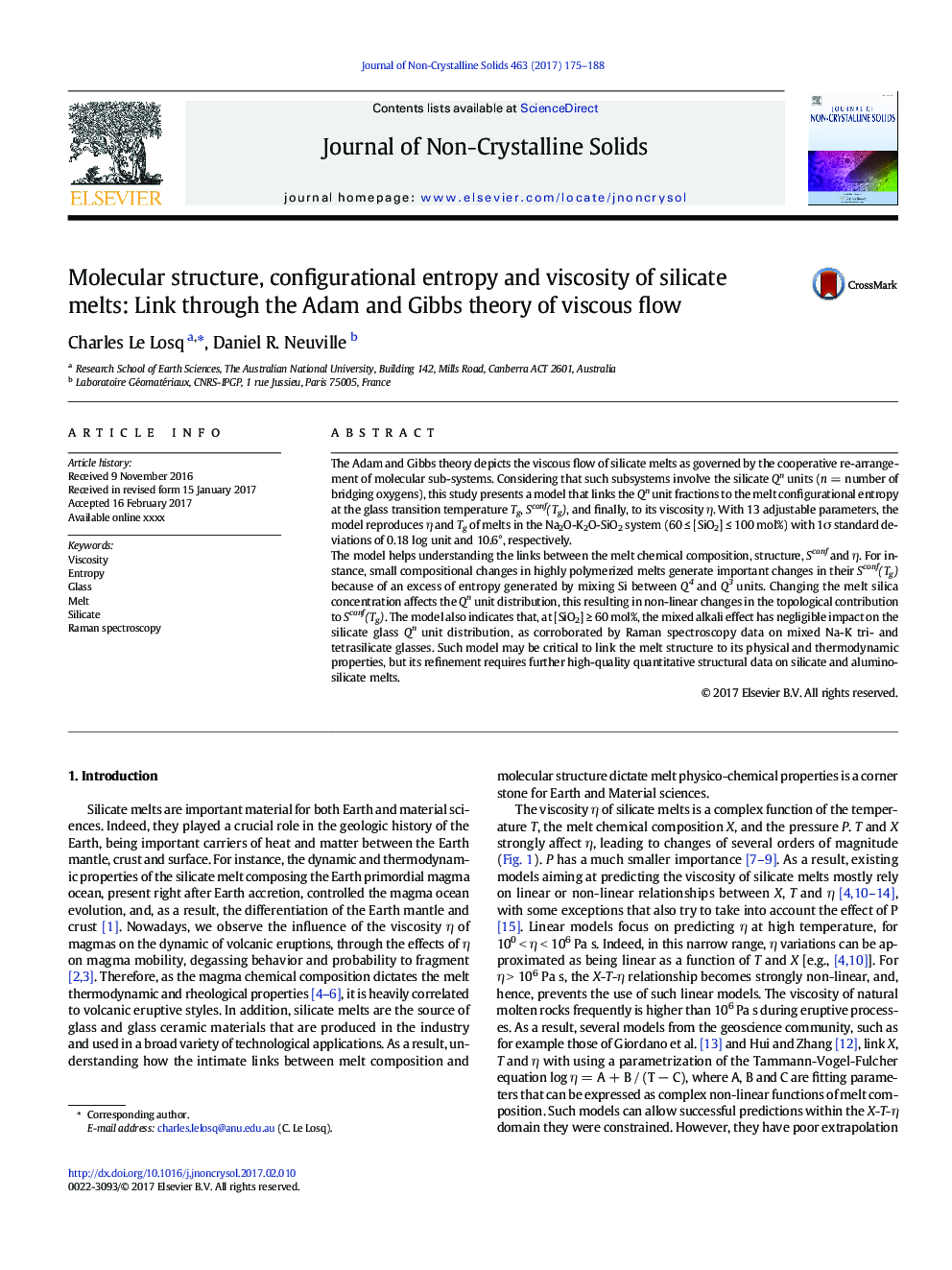| Article ID | Journal | Published Year | Pages | File Type |
|---|---|---|---|---|
| 5441322 | Journal of Non-Crystalline Solids | 2017 | 14 Pages |
Abstract
The model helps understanding the links between the melt chemical composition, structure, Sconf and η. For instance, small compositional changes in highly polymerized melts generate important changes in their Sconf(Tg) because of an excess of entropy generated by mixing Si between Q4 and Q3 units. Changing the melt silica concentration affects the Qn unit distribution, this resulting in non-linear changes in the topological contribution to Sconf(Tg). The model also indicates that, at [SiO2] â¥Â 60 mol%, the mixed alkali effect has negligible impact on the silicate glass Qn unit distribution, as corroborated by Raman spectroscopy data on mixed Na-K tri- and tetrasilicate glasses. Such model may be critical to link the melt structure to its physical and thermodynamic properties, but its refinement requires further high-quality quantitative structural data on silicate and aluminosilicate melts.
Related Topics
Physical Sciences and Engineering
Materials Science
Ceramics and Composites
Authors
Charles Le Losq, Daniel R. Neuville,
